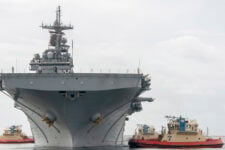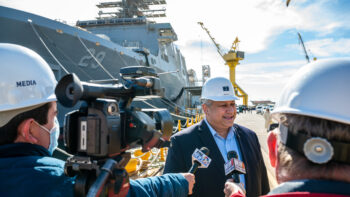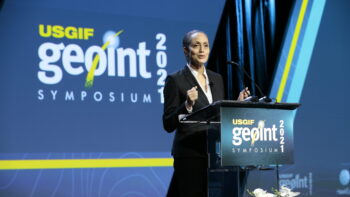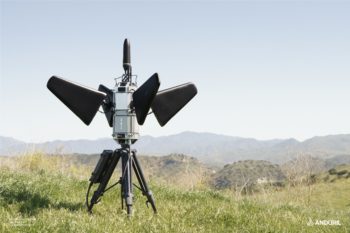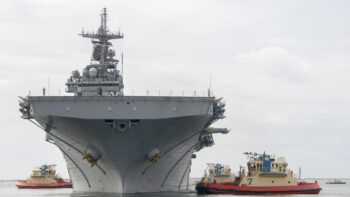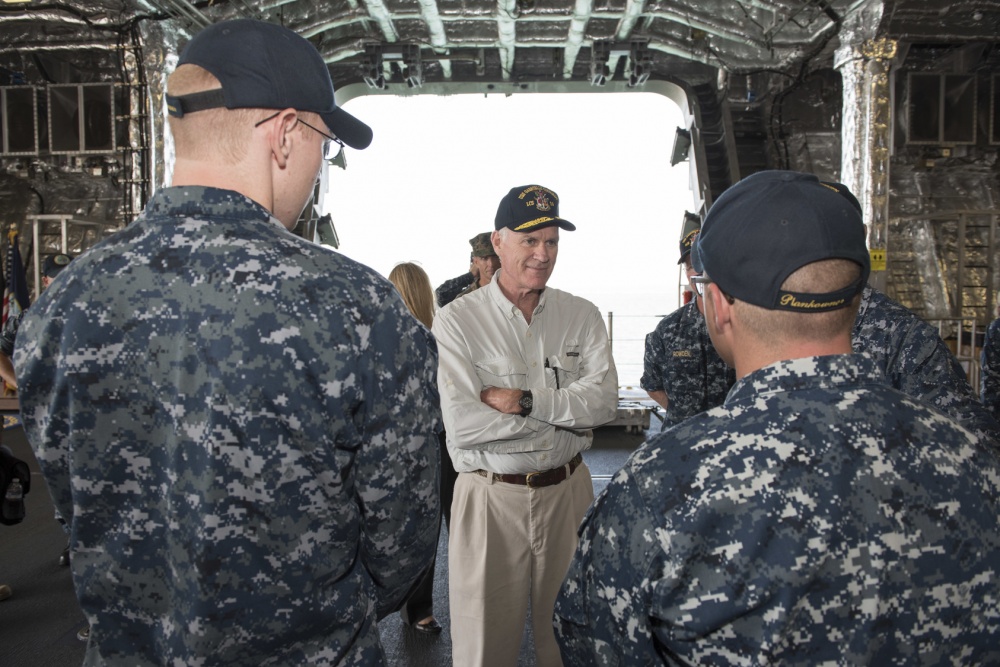
Navy Secretary Richard V. Spencer speaks to sailors aboard the USS Giffords.
[Updated with comments from Rep. Luria and Huntington Ingalls.]
WASHINGTON: Navy Secretary Richard Spencer today slammed Congress for spreading “disinformation” about Navy shipbuilding plans, while accusing the country’s largest shipbuilder of having “no idea what we’re doing.”
The remarks came in response to criticism from Rep. Elaine Luria Tuesday about delays on the Navy’s new $13 billion aircraft carrier USS Gerald R. Ford, which has suffered a series of delays in its construction, leading to pointed criticism from Capitol Hill.
“Leaders in Congress who make disparaging comments against a platform [for which] we’re developing new technologies — you could not ask for a better disinformation program for our competitors,” Spencer said Wednesday at the Brookings Institution. “And I truly mean that.”

The USS Gerald R. Ford
The issue with the carrier came up during a testy exchange Tuesday between Luria, a 20-year Navy veteran, and two Navy service acquisition officials during a hearing on ship readiness.
“I just truly don’t feel like this is a great investment as a taxpayer,” the congresswoman said, adding that spending “$13 billion on a ship that’s going to deploy six years past its original design timeline” has been frustrating for lawmakers. She called the Ford a “$13 billion nuclear-powered berthing barge.”
Spencer shot back today that, “if she wants to get on board and help…we have open arms.”
Responding to Spencer’s criticism, Luria said in a statement today she finds it “disappointing that the Secretary finds Congressional oversight disparaging.”
Bringing up the uncomfortable promise Spencer once bragged he made to President Trump that the weapons elevators on the Ford will work, “or you can fire me,” Luria continued, “Secretary Spencer himself promised the President that the weapons elevators would be fully functional by the end of this past summer. It is now fall and no elevators accessing the ammunition storage areas are functioning, which results in a carrier with no combat capability. I have yet to see a detailed plan to fix the multitude of problems with these new technologies. The Navy accepted the design of these systems and accepted the ship in an incomplete state from HII, so it is absolutely my role to question Navy leadership on their current failure to deliver an operational ship to the fleet.”
The secretary didn’t aim his ire solely at Luria. He blamed Congress for virtually all that ails the Navy, including having six of the service’s 10 aircraft carriers under repair and unable to deploy. Spencer cited a Navy study that concluded the nine continuing resolutions placed on the Pentagon in lieu of full-year budgets cost the service $4 billion.
“So when I get accused of cost overruns on the Ford by my board of directors and they go and burn $4 billion, I’m confused as to who is responsible for wasting or diddling with resources,” he said. “It is an atrocity that a CR exists.”
Spencer also attempted to deflect responsibility for the Ford’s delays — it was supposed to be ready in 2018 but is still years away from completion — to the shipbuilder, Huntington Ingalls.
As Luria mentioned, the Ford will run trials at sea later this month with just four of the 11 electromagnetic elevators functional. The tests were scheduled for July but pushed back when it was discovered that none of the elevators were working. The Navy made the decision years ago to forgo testing the electromagnetic elevators before installing them on the ship, something it is paying for now.
The secretary today explained that he made the deal with the president because he “needed to rally the troops because I didn’t think [Huntington] was really focusing on it enough,” and intended the “bet with the president as a rally.” But, he said, in the spring of this year, Huntington’s “management says, ‘Oops! It’s going to be 2020. We really have no idea what we’re doing.'”
Huntington Ingalls spokesperson Beci Brenton said in emailed statement the “Ford is a first-in-class ship and with that come many unique challenges,” including the decision to install a bevy of new technologies on the first ship of the class, as opposed to phasing them in over the first three ships of the class. “That plan was changed in 2002 when a decision was made to install all of the new technology on the first ship,” she said.
In another point blank criticism of the Virginia-based company, which builds and repairs all of the Navy’s 11 aircraft carriers, he added, “faith and confidence of senior management at HII when it comes to this project is very, very low.”
Defense companies keep up momentum on share repurchases, despite Navy leader’s criticism
Capital Alpha Partners found that buy back amounts at defense contractors were higher this financial quarter for all but only four others since March 2011.





